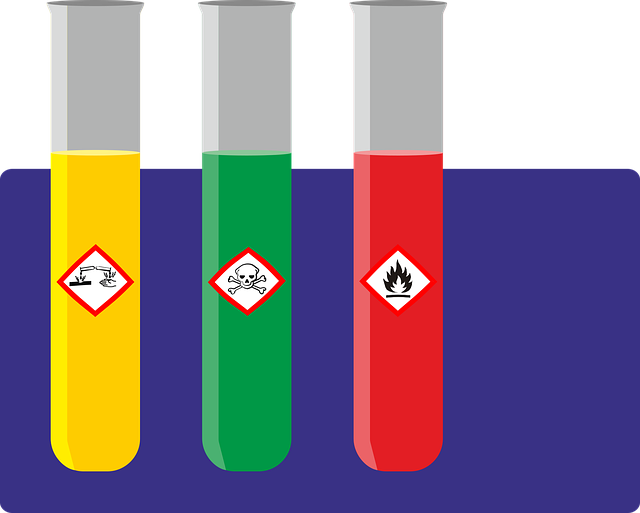In an increasingly interconnected world, maintaining uniform safety standards for chemical classification and labeling is crucial. The Globally Harmonized System (GHS) of Classification and Labeling of Chemicals was developed to address this need, offering a consistent framework that ensures the safe production, handling, and transport of chemicals worldwide.
This comprehensive blog explores the GHS, delving into its significance, implementation, and impact on global safety standards and chemical labeling practices.
What is the Globally Harmonized System (GHS)?
The Globally Harmonized System (GHS) of Classification and Labeling of Chemicals is an internationally agreed-upon system developed by the United Nations. Its primary purpose is to standardize and harmonize the classification and labeling of chemicals globally.
The GHS provides a consistent approach to defining and communicating chemical hazards, thereby enhancing safety and environmental protection.
Brief History of Globally Harmonized System (GHS)
The Globally Harmonized System (GHS) of Classification and Labeling of Chemicals was developed through international collaboration under the auspices of the United Nations. The initiative began in 1992 at the Rio de Janeiro Earth Summit, where the need for a global standard for chemical classification and labeling was recognized.
The GHS was subsequently developed by experts from various countries, international organizations, and stakeholder groups. Officially adopted in 2003, the GHS aims to harmonize and simplify hazard communication to enhance safety and facilitate international trade, reflecting years of negotiation and consensus-building among global partners.
Chief Objectives of Using the GHS

There are 3 main purposes served by the GHS:
- Enhancing protection: Protecting human health and the environment by providing a consistent and understandable classification system for chemical hazards.
- Facilitating trade: Reducing barriers to international trade by harmonizing chemical classification and labeling.
- Reducing costs: Minimizing the costs and regulatory burden associated with the need to comply with multiple classification and labeling systems.
Breaking Down the Components of GHS
The GHS comprises several key components designed to achieve its objectives:
- Classification Criteria: The GHS establishes specific criteria for classifying chemicals based on their physical, health, and environmental hazards.
- Labeling Requirements: It outlines standardized label elements, including symbols (hazard pictograms), signal words, hazard statements, and precautionary statements.
- Safety Data Sheets (SDS): The GHS prescribes a standardized format for Safety Data Sheets, ensuring that comprehensive and consistent information is provided for chemical products.
- Hazard Classification: The GHS uses a systematic approach to classify chemicals according to their physical, health, and environmental hazards. This involves evaluating the intrinsic properties of chemicals and assigning them to hazard classes and categories.
- Hazard Classes and Categories: The GHS defines specific hazard classes and categories to classify chemicals. Hazard classes include physical hazards (e.g., flammability, explosiveness), health hazards (e.g., acute toxicity, carcinogenicity), and environmental hazards (e.g., aquatic toxicity). Each class is further divided into categories based on the severity of the hazard.
- Precautionary Statements: Precautionary statements provide guidance on how to minimize or prevent adverse effects resulting from exposure to a hazardous chemical. These statements cover various aspects, including prevention, response, storage, and disposal. They are standardized to ensure consistency and clarity.
- Product Identifier: The product identifier is a unique name or number used to identify a chemical product on a label or Safety Data Sheet (SDS). It ensures that users can accurately identify the substance and access relevant hazard information.
- Supplier Information: Labels and Safety Data Sheets must include information about the supplier of the chemical product. This typically includes the name, address, and telephone number of the manufacturer or importer, enabling users to contact them for further information if needed.
- Signal Words: Signal words such as “Danger” and “Warning” are used to indicate the relative level of hazard severity. “Danger” is used for more severe hazards, while “Warning” indicates less severe hazards.
- Hazard Pictograms: The GHS includes a set of standardized hazard pictograms that visually represent the type of hazard posed by a chemical. These pictograms are easily recognizable symbols that help convey critical information at a glance.
- Hazard Statements: Hazard statements describe the nature and degree of the hazards associated with a chemical. They provide specific information on the potential risks, such as “Causes serious eye damage” or “Toxic if inhaled.”
- Confidential Business Information (CBI): The GHS includes provisions for protecting confidential business information while still ensuring that sufficient hazard information is disclosed to protect human health and the environment. This allows companies to maintain trade secrets while complying with safety requirements.
- International Coordination: The GHS promotes international coordination and cooperation among countries to ensure consistent implementation and updates. This involves regular reviews and revisions of the system to reflect new scientific knowledge and practical experience.
The Importance of Safety Standards
The establishment and adherence to safety standards are critical for ensuring a safe working environment, protecting public health, and safeguarding the environment. The GHS plays a pivotal role in reinforcing these safety standards on a global scale.
Enhancing Workplace Safety
The implementation of the GHS enhances workplace safety by providing clear and consistent information about chemical hazards. Workers can better understand the risks associated with handling chemicals and take appropriate precautions. The standardized labels and Safety Data Sheets (SDS) facilitate effective communication of hazard information, reducing the likelihood of accidents and exposure to harmful substances.
Promoting Environmental Protection
The GHS also contributes to environmental protection by promoting the safe handling, storage, and disposal of chemicals. By classifying chemicals based on their environmental hazards, the GHS helps identify substances that pose risks to ecosystems. This information is crucial for developing strategies to minimize environmental contamination and protect biodiversity.
Regulatory Compliance and Trade Facilitation
Adhering to the GHS ensures compliance with international safety standards, which is essential for companies engaged in global trade. Harmonized classification and labeling reduce the complexity and costs associated with meeting different regulatory requirements in various countries. This facilitates smoother trade operations and enhances the competitiveness of businesses in the global market.
The Role of GHS in Chemical Labeling
Chemical labeling is a fundamental aspect of the Globally Harmonized System (GHS). It serves as the primary means of communicating hazard information to users, ensuring they are aware of the potential risks associated with chemical products.
Standardized Label Elements
The GHS mandates the use of standardized label elements to convey hazard information effectively. These elements include:
- Hazard Pictograms: Symbolic representations of the chemical’s hazards, such as flames for flammable substances or skull and crossbones for toxic materials.
- Signal Words: Words like “Danger” or “Warning” indicate the severity of the hazard.
- Hazard Statements: Descriptions of the nature and degree of the hazard, such as “Causes severe skin burns and eye damage.”
- Precautionary Statements: Instructions on how to minimize or prevent adverse effects, such as “Wear protective gloves” or “Avoid release to the environment.”
Improving Hazard Communication
By standardizing chemical labeling, the GHS improves hazard communication across different regions and languages. Workers, emergency responders, and consumers can quickly and easily recognize the hazards associated with a chemical product, regardless of their location. This consistency enhances safety and reduces the risk of accidents caused by misinterpretation of hazard information.
Ensuring Accurate and Comprehensive Information
The GHS requires that labels provide accurate and comprehensive information about the chemical’s hazards. This includes details on the chemical’s identity, hazard classification, and recommended safety precautions. By ensuring that this information is readily available, the GHS enables users to make informed decisions about the safe handling and use of chemicals.
Implementation of GHS and the Challenges
The implementation of the Globally Harmonized System (GHS) varies across countries and industries. While many nations have adopted the GHS, there are challenges associated with its implementation.
Adoption and Harmonization
Countries that have adopted the GHS have integrated its principles into their national regulations. This process involves aligning existing classification and labeling systems with the GHS criteria and requirements. The degree of harmonization may vary, as some countries may adopt certain elements of the GHS while maintaining specific national regulations.
Training and Education
Effective implementation of the GHS requires comprehensive training and education for stakeholders, including workers, employers, regulators, and emergency responders. Training programs are essential to ensure that individuals understand the GHS principles, can interpret hazard information accurately, and know how to apply the recommended safety measures.
Following GHS Made Easy
Implementing the Globally Harmonized System (GHS) of Classification and Labeling of Chemicals poses several challenges, such as regulatory differences, resource constraints, and the need for continuous updates. Companies may struggle with aligning their existing systems to GHS standards, ensuring comprehensive training for their workforce, and maintaining up-to-date hazard information.
Elechemy.com can play a pivotal role in facilitating smooth and efficient GHS implementation by providing expert guidance on navigating diverse regulatory frameworks, helping companies harmonize their chemical classification and labeling processes with GHS requirements, ensuring compliance, and reducing the risk of legal complications.
Additionally, Elechemy.com can help to maintain Safety Data Sheets (SDS) and labels, ensuring that companies remain compliant with current standards.
By leveraging Elchemy.com’s expertise, resources, and continuous support, companies can overcome the challenges of GHS implementation, enhancing safety, regulatory compliance, and overall operational efficiency. To know more about our services, reach out to us at www.elchemy.com




